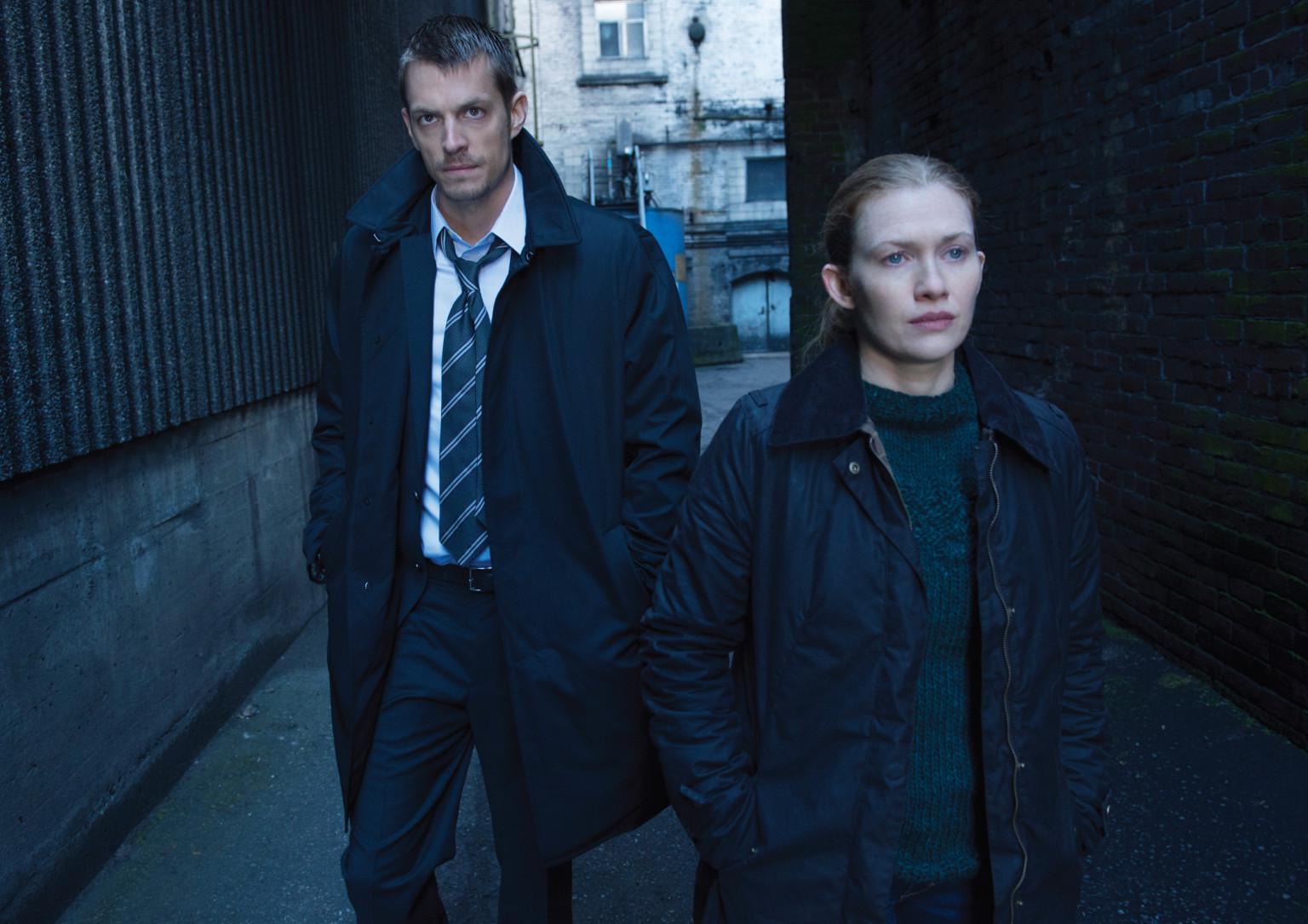Dupes like me who actually stuck around for The Killing’s torturous third season were mostly relieved when AMC canceled the show last year for the second time, finally releasing blindly loyal viewers to complain about something else. Then came Netflix, which decided to greenlight another season (of just six episodes). Netflix probably just wanted to keep future binge-watchers from throwing things at their TVs after the abrupt end of Season 3, but I was personally happy to let these characters retreat into their gloomy underworld, perpetual scowls and anguish intact.
My impulse was wrong, it turns out. I’ve just finished the twisted, comparatively taut final episodes, and they make a convincing argument that some struggling serials simply need abbreviated seasons, preferably available all at once. There’s nothing radically different about creator Veena Sud’s vision this time around: We follow detectives Linden (Mireille Enos) and Holder (Joel Kinnaman) right where we left off, after the extrajudicial killing of a murder suspect. As the detectives move to conceal their crime, and begin to unravel, they’re assigned a new case involving an affluent military family slaughtered in their own home. The only survivor is the family’s son, a troubled student at the academy, who is badly beaten but has no memory of the night.
From there, we’re in pretty standard Killing territory: alternately searing and silly scenes of investigation and personal turmoil clipped together with heavy nods to what’s coming next. And yet the new six-episode format completely changes how the show unfolds. On a basic level, fewer episodes allow less time for false leads and dead-end subplots. If we choose to heed Sud’s belief that her show was never really about who did it (all those red herrings beg to differ!), the tightened season also helps put pressure on Holder and Linden’s perpetual dance with the edge, forcing them to battle their demons with a little more haste. The languid struggles of earlier seasons suddenly feel more urgent.
But it’s not just the reduced running time that’s different—it’s the streaming format. Netflix autoplays the next episode after each one ends, and it doesn’t stop until they’re done. This setup beats The Killing at its own misguided game: Those unearned cliffhangers set to a taunting beat sting a lot less when the next episode starts playing moments later. Even when the show reverts to bad habits—coincidences, convenient timing, people pointlessly yelling and hitting things—it’s more forgivable because it’s no longer part of a halting serial package. The Killing is based on a Danish series I haven’t seen, but at least for this American version, perhaps the 13-episode cable season was the wrong format for the material all along. It works much better as an abbreviated miniseries, no longer drawn out into more episodes than the story can support.
You might think that this newfound energy comes from this being the end of the series, but in fact little of this season feels final until the very last episode (more about that in a moment). Linden and Holder embroiled in a potentially career-ending crisis is nothing new. And the season’s new investigation is mostly made gripping by guest star Joan Allen, who plays Margaret Rayne, the head of the military school. She fiercely protects the boys in her class, to a degree that turns heads, and she seems to have a special affection for Kyle (Tyler Ross), the only survivor of the killings. Rayne, a career military woman, is a perfect foil for the insolent Linden, and the two women have some irresistible exchanges. Another indisputable win for The Killing on Netflix is introducing more four-letter words into Linden’s vocabulary, where they’ve always belonged.
In fact, the new format solves so many of the show’s old problems that even fans who abandoned The Killing after the infamous first-season cliffhanger should consider returning to the series for the final episodes. (Wikipedia summaries of season three are enough to get up to speed; I needed them just to remember what happened.) The final season doesn’t make the show the redefining procedural fans once hoped for, but it’s the best iteration of the series it did become.
And with that, let’s briefly consider the series finale, because it’s hard to ignore. The episode is directed by Jonathan Demme, who brings a haunting stillness to the big reveal and admirably resists the action-driven demands of wrapping up multiple storylines. The beautifully crafted episode also offers an ingenious last-minute cameo from an old cast member that gives one last glimpse into just how dark this show’s view of human nature really is. But then in the last minutes, when The Killing finally has no more shadowy trick doors to pop open, it does something totally expected: It goes for genuine, unashamed emotional payoff. The last five minutes are either the wrongest or rightest ending possible (you decide), but no one will disagree that after all its relentless digressions, this show finally has an ending.
